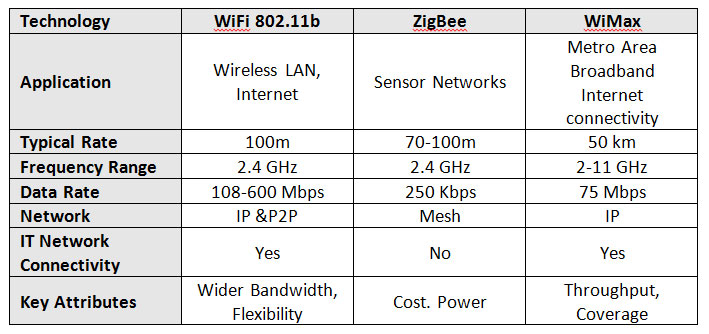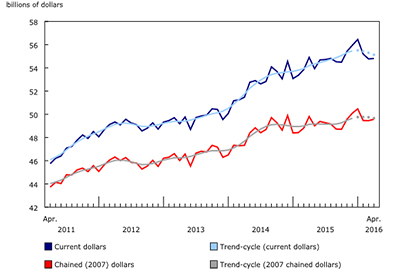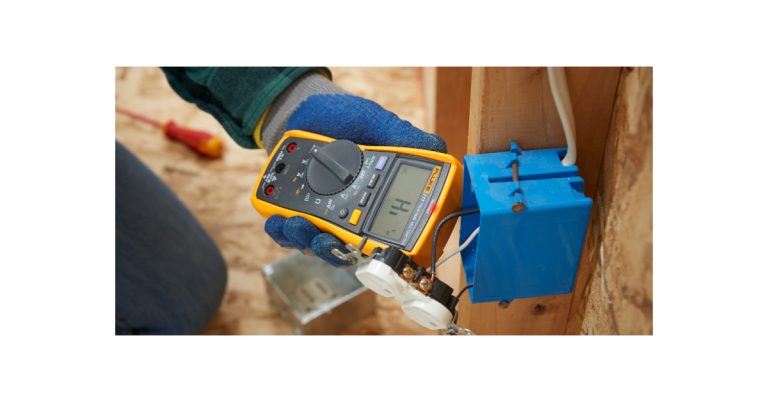Wi-Fi Expansion — Look to the Future

The impending 802.11n standard will enable WLANs to support emerging media-rich applications. Keeping up with technological advances and understanding the differences with between technologies allow you to help your end users make the best choice.
This article looks at the applications and characteristics of three emerging wireless technologies that promise to deliver more services to more users in less time:
•Wireless Local Area Networks (WiFi-802.11n)
•Wireless Personal Area Networks (ZigBee)
•Wireless Metropolitan Area Networks (WiMAX)
Comparison of emerging wireless technologies
The use of wireless technologies is beginning to appear similar to the initial development of the railways. Each technology seems to have a different “gauge,” and compatibility issues seem to confuse the novice. Here are the main points of comparison of the three technologies.

Differences between Wi-Fi and Zigbee
1. IEEE standard: Wi-Fi has been standardized under IEEE 802.11.x. There are several versions of the protocol where x gets replaced by a, b, g, n, etc., which are different versions of Wi-Fi. Zigbee comes under 802.15.4 IEEE.
2. Caretaker alliance: Wi-Fi is managed and its certification process is taken by Wi-Fi Alliance, an independent group comprising several electronics and communication companies. On similar grounds, Zigbee also has a separate alliance that takes of Zigbee based product development and certification processes.
3. Development timeline: Wi-Fi came out in 1985 as an alternative to ease the work of cashier machines. A standards committee was established in 1990, which launched the standard in 1997. The idea for Zigbee was conceived in 1999, after it became clear that Wi-Fi and Bluetooth were not suitable for some long running applications. It was launched in 2004.
4. Operating frequency: Wi-Fi is known to work at 2.4GHz, 5GHz, though there have been recent developments where Wi-Fi is working at 60GHz frequency. Zigbee works at 900-928 MHz and 2.4GHz. As well, Zigbee protocol has a specific frequency of 868 MHz for European countries.
5. Channel bandwidth: Zigbee protocol-based communications have a channel bandwidth of 1MHz while Wi-Fi channels have a bandwidth of 0.3, 0.6 or 2MHz.
6. Network range: Zigbee is restricted to Wireless Personal Area Networks (WPAN), reaching 10-30 metres in usual applications. Some applications have recently reached up to 100m. Wi-Fi serves up for PAN and WLAN area networks with an average range between 30 to 100 metres.
7. Data transfer speed: Wi-Fi networks, though faster than ZigBee at data transfer, vary in terms of speed. Wi-Fi networks defined under 802.11b standard have a maximum data transfer speed of 11mbps while a and c versions have 54mbps of maximum data transfer speed. Maximum speed in ZigBee networks is only 250kbps, fairly lower than the lowest Wi-Fi offers.
8. Bit time: defined as time taken to transmit one bit at a given data rate of transfer, bit time in ZigBee is 4 microseconds while in Wi-Fi it is only 0.00185 microseconds.
9. Power consumption: Wi-Fi, though now having a low power version on the horizon, is not known as a power efficient network. Wi-Fi based devices need a good battery back-up if they are to be used for more than 10 hours or so. On the other hand, Zigbee protocol has been designed for “assemble and forget” manner. These are extremely minimal in terms of power consumption and hence can go on for weeks and months. In general, Zigbee based networks consume 1/4th of the power consumed by Wi-Fi networks.
10. Network elements: in a standard point-to-point network, two stations can be connected to each other. A Wi-Fi router also may be needed to connect multiple devices to each other and/or to the Internet. In Zigbee, the network elements can be broadly classified in three ways: Zigbee coordinator, Zigbee end router, Zigbee end device.
11. Network size: a single Wi-Fi based network can have a network size of up to 2007 nodes, whereas Zigbee based networks can have over 65,000 nodes in one such network.
12. Network security: Zigbee protocols use Advanced Encryption Security (AES) methods for encryption and CCB-CCM methods for network security. Wi-Fi based networks use WEP, WPA and WPA2 protocols for network encryption and security, respectively.
13. Applications: Wi-Fi is a preferable choice for an internet connection based network and now is also being encouraged to interface various media/entertainment devices wirelessly. One can find Wi-Fi in data exchange between a computer and modem, streaming music and videos on a television through a Wi-Fi enabled computer or media device. Zigbee protocol has been precisely designed to exchange data and it is more prevalent in the wireless sensor based networks such as those in home automation systems or industrial machinery coordination systems. Researchers are being to bring down power requirements of Wi-Fi based systems so that they can perform at low energy levels like Zigbee does. Moreover, a smoother gateway between both protocols is also on its way for better interfaces between varieties of gadgets.
Conclusion
Wi-Fi flexibility and the capability for Smartphone apps are viewed as the most likely contender for the home network backbone.
ZigBee, on the other hand, is likely to make best use of its low power and high-speed operation in short-range equipment interconnects, such as personal computers and portable equipment. ZigBee networks are primarily intended for low duty cycle sensor networks (<1%). 802.11n is viewed as being superior in maintaining compatibility with existing wireless LAN, while ZigBee is generally thought more likely to achieve lower levels of power consumption.
Our vision of the future is that WiMax will enable mobile broadband at an affordable price. This will be achieved through the adoption of WiMax by a cellular provider seeking to make a jump to this disruptive technology.
WiMax is not expected to completely eliminate Wi-Fi technology in the near future, but will be a complement to Wi-Fi as its primary backhaul service of choice. WiMAX promises to help corporations expand business, drive down costs, increase overall profitability, increase the quality of service, and increase the number of users that connect to the Internet.
Paul Eitmant is President and CEO of IP Group International, which serves the needs of business-to-business enterprises in over 30 countries worldwide by adding specialized expertise to the business planning and implementation process; Tel: 480.488.5646 480.488.5646; paulipgroup@cox.net.
480.488.5646; paulipgroup@cox.net.
References
[1] Introduction to Wi-Fi technology, Retrieved on September 24, 2006 from www.wi-fitechnology.com
[2] Broadcom, 802.11n: Next-Generation Wireless LAN Technology, White Paper dated April 2006
[3] Homepage of 802.15 WPAN Task Group 4 (TG4),
http://grouper.ieee.org/groups/802/15/pub/TG4.html
[4] P. Kinney, ZigBee Technology: Wireless Control that Simply Works, White Paper dated 2 October 2003.
[5] IEEE 802.16 and WiMax: Broadband Wireless Access for Everyone, Intel Corporation, 2003.
http://www.intel.com/ebusiness/pdf/wireless/intel/80216_wimax.pdf
[6] Specifications of WiMax. Retrieved on October 10, 2006 from http://wimax.com
[7] Westech Communications Inc. on behalf of the WiMax Forum, Can WiMax Address Your Applications? White paper dated October 24, 2005. World Academy of Science, Engineering and Technology 25 2007










